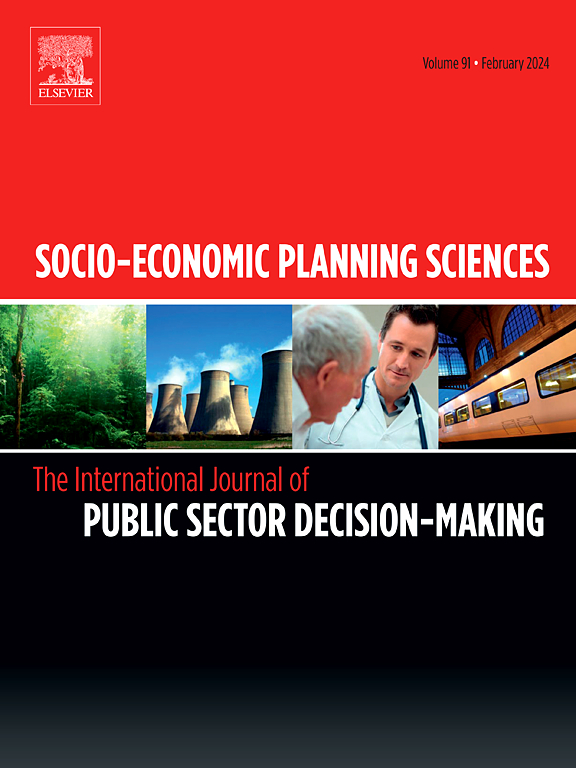Convergence of sustainable development goals evolution and Five-Year Plans reform: Lessons from China
IF 5.4
2区 经济学
Q1 ECONOMICS
引用次数: 0
Abstract
Although the Sustainable Development Goals (SDGs) offer a comprehensive and interconnected framework for evaluating sustainable development worldwide, few studies have integrated the influence of national policy formulation and implementation on the interdependencies between SDGs. Accordingly, this study adopts the social network analysis (SNA) approach to construct indicators networks at different stages, and extracts related keywords from China's Five-Year Plans (FYPs) through text analysis. Moreover, the keywords from the FYPs across four periods are aligned with the SDG networks to assess their convergence. The findings indicate that the SDGs networks show distinct characteristics over four stages, shifting from high aggregation to more dispersed structures. As the FYPs progress, China's SDGs evolve from a focus on poverty reduction (G1) and economic growth (G8) to prioritizing climate change (G13) and global partnerships (G17), reflecting the socio-economic reforms of the times in China. Additionally, the stability of the SDGs network increases throughout the four-stage progression as the FYPs are refined. The findings strengthen understanding of sustainable development in China and may provide key insights to help prioritize actions to achieve as many SDGs as possible by 2030.
可持续发展目标演进与五年规划改革的衔接:中国的经验教训
尽管可持续发展目标(sdg)为评估全球可持续发展提供了一个全面和相互关联的框架,但很少有研究将国家政策制定和实施对可持续发展目标之间相互依存关系的影响纳入其中。因此,本研究采用社会网络分析(SNA)方法构建不同阶段的指标网络,并通过文本分析从中国五年规划中提取相关关键词。此外,四个时期的五年规划关键词与可持续发展目标网络保持一致,以评估其趋同程度。研究结果表明,可持续发展目标网络在四个阶段表现出明显的特征,即从高度聚集到更分散的结构。随着五年规划的推进,中国的可持续发展目标也从关注减贫(G1)和经济增长(G8)演变为优先考虑气候变化(G13)和全球伙伴关系(G17),反映了中国时代的社会经济改革。此外,随着五年规划的完善,可持续发展目标网络的稳定性在整个四阶段的进展中不断提高。研究结果加强了对中国可持续发展的理解,并可能为帮助优先采取行动,在2030年之前实现尽可能多的可持续发展目标提供关键见解。
本文章由计算机程序翻译,如有差异,请以英文原文为准。
求助全文
约1分钟内获得全文
求助全文
来源期刊

Socio-economic Planning Sciences
OPERATIONS RESEARCH & MANAGEMENT SCIENCE-
CiteScore
9.40
自引率
13.10%
发文量
294
审稿时长
58 days
期刊介绍:
Studies directed toward the more effective utilization of existing resources, e.g. mathematical programming models of health care delivery systems with relevance to more effective program design; systems analysis of fire outbreaks and its relevance to the location of fire stations; statistical analysis of the efficiency of a developing country economy or industry.
Studies relating to the interaction of various segments of society and technology, e.g. the effects of government health policies on the utilization and design of hospital facilities; the relationship between housing density and the demands on public transportation or other service facilities: patterns and implications of urban development and air or water pollution.
Studies devoted to the anticipations of and response to future needs for social, health and other human services, e.g. the relationship between industrial growth and the development of educational resources in affected areas; investigation of future demands for material and child health resources in a developing country; design of effective recycling in an urban setting.
 求助内容:
求助内容: 应助结果提醒方式:
应助结果提醒方式:


